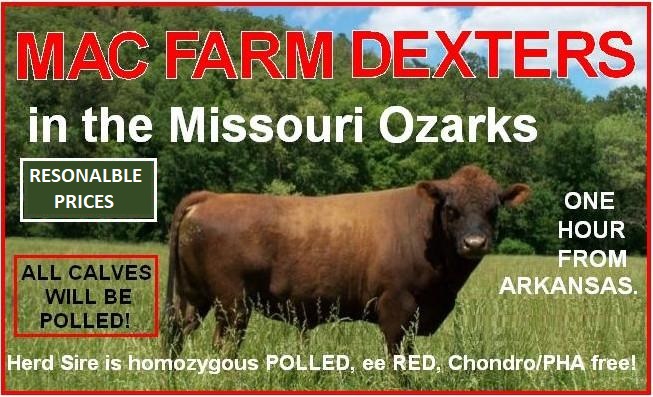
(Click to see DEXTERS FOR SALE
SCROLL DOWN TO READ ABOUT MILK FACTORS
(Click to read about the CHRONDRO FACTOR (SHORT LEGGED OR LONG LEGGED)
SCROLL DOWN TO READ ABOUT AND SEE PRESENT AND PAST HERD SIRES
CLICK HERE TO RETURN TO MAIN PAGE → https://macfarmdextercattle.com/index.htm#INDEX
LOBO MayThe4thBW/U is our latest herd sire and ALL of his offspring will be POLLED because he is homozygous polled, plus he is e/e/RED, PHA/Chrondo free and he carries the A2 gene which will go great with our girls who carry the A2, some being A2A2.
CONTACT INFO
SEND US AN EMAIL AT: macfarmdexters@yahoo.com and we will get in touch
|
We are located in the Ozarks, near the southern border of Missouri.....not far from the Arkansas border. |
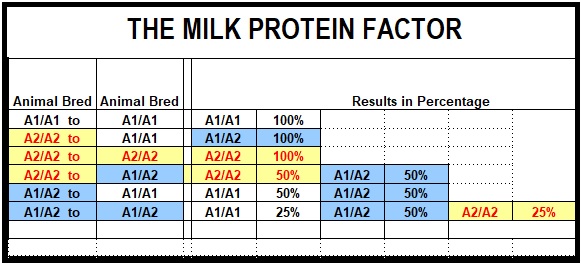
SHORT LEGGED("Affected"== Has the chondrodysplasia (Dwarfism) gene)
VS
LONG LEGGED ("Normal"==Non-carrier of the chondrodysplasia gene)
- Short Leg, Classic Dexter, Dwarf, Achondroplastic or Chondrodysplastic Dwarf, Beef Type, Heterozygote, Carrier, Affected.
- Long Leg, Normal, Kerry Type, Dairy Type, Proportionate, Homozygous Normal.
The problem is that most of the names are either inaccurate or offending. For instance, the Dexter breed as a whole is rather short legged, and even animals dubbed Long-legged are often short legged when compared to members of other breeds. Another problem is that there are a lot of rather large Dwarfs, and a lot of rather small Normals. The difference is mostly in the length of the cannon bone, and a shortened cannon bone produces the classic choppy gait of the Affected/Short leg.
We are at a point in our breed where technology is
available to make educated decisions about how to handle the
Short leg Dexters. There is now a
genetic test available for breeders who are unable to tell
what type they have, for animals that are borderline in type,
or for people who just want to make sure. However, we do not
need a witch hunt. If an animal is deemed to be
chondrodysplasia free by a
genetic test, it can not carry the
Bulldog trait and cannot pass it on to itís
offspring. An animal that is from two
chondrodysplasia-free parents cannot not carry the
mutation. Period. You do not have to throw out five
generations. Today our knowledge of genetics takes us beyond
that. We have a relatively rare breed and cannot afford to
lose all our genetic material over one gene.
Will people continue to breed Affected
short legged Dexters? The answer is likely yes. Test or
no test, the bottom line is that some people are attracted to
the choppy gait and compressed shape of the
Affected short leg type and will
always be devoted to this model. The ethical problem is that
many new breeders are not aware of the genotype of these
animals and do not know what they are buying
should
always be bred to a
non-carrier of the chondro gene
so that they can avoid having the
chondro genes doubling up to produce the
Severely Affected/Bulldog calves which are
aborted. The only way you can get a
Bulldog calf is by breeding two
Affected (chondro carriers)
animals together. Also, breeding
Affected (chondro carrier) to
Normal (non chondro long legged) gives you the same
number of short legged calves as breeding
affected (short legged) to
affected (short legged). And,
breeding Affected to
Normal eliminates the risk of
Severely Affected/Bulldog calves and replaces
this loss with Normal calves. Of
course, if you only breed Normal
to Normal, you donít have to
worry about any of this!
One factor not normally discussed: My hubby prefers longer teats for milking, and sometimes the short legged cows have smaller teats.

| (See photo below for present and past Herd Sires) |
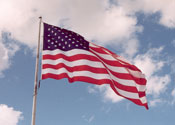       |
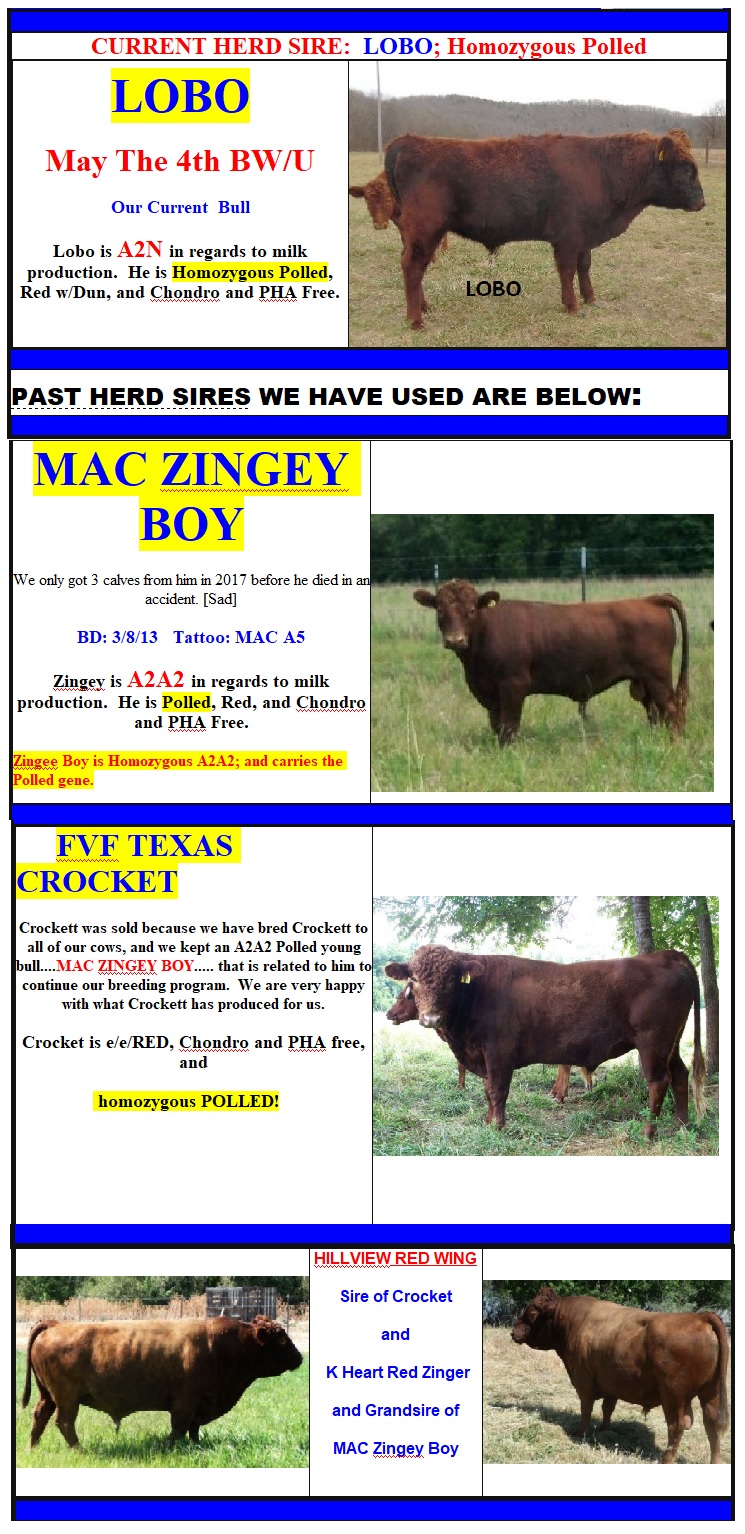 |
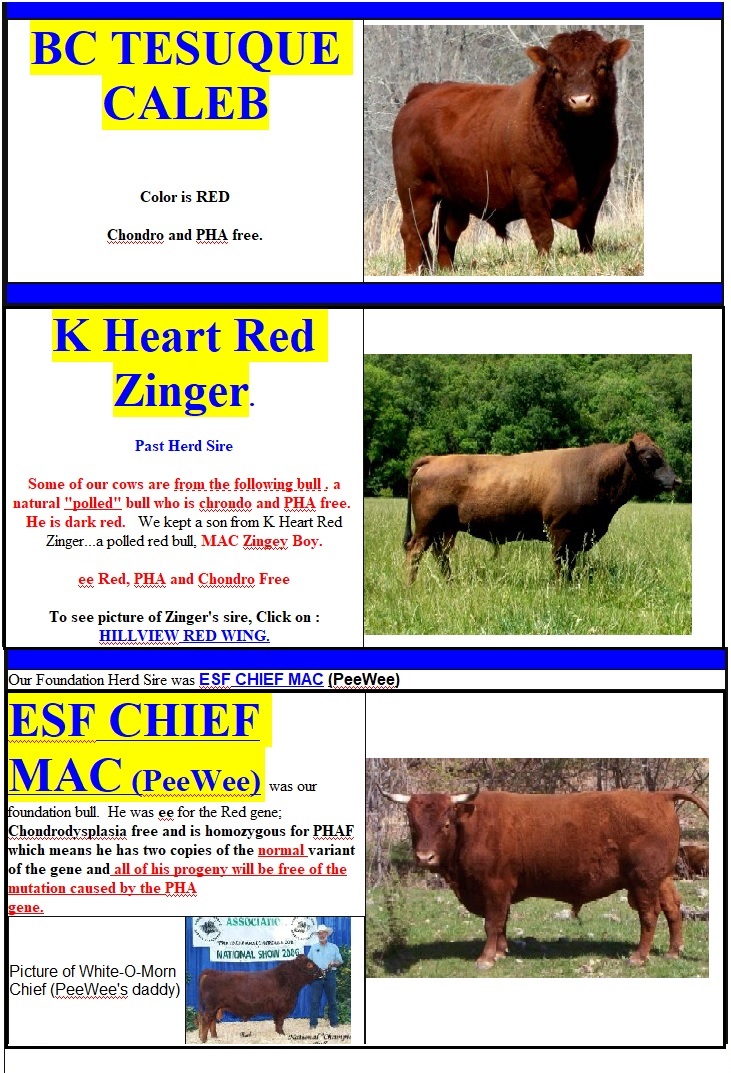 |
 |